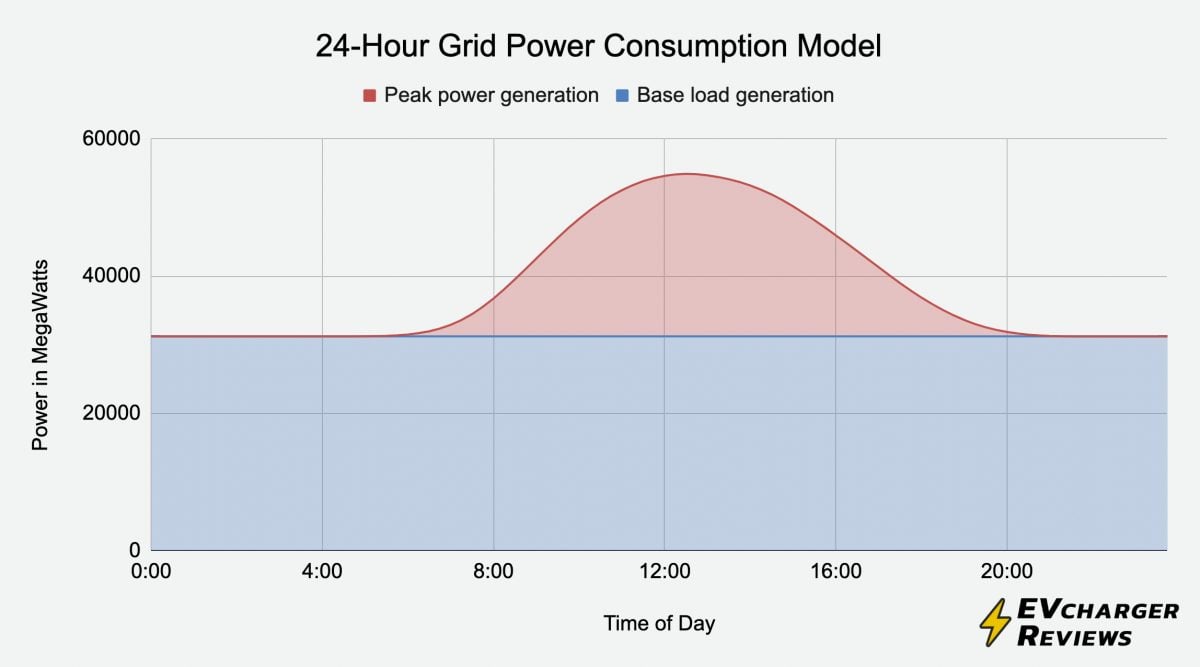It is well known that charging an EV at home, during off-peak hours is less expensive than charging at public charging stations. There is also an argument that charging at home overnight is less costly from an environmental impact perspective. Why? Our chart above demonstrates a very uneven grid energy consumption curve throughout a typical day.
The grid in most regions will have energy plants for the unchanging base load to cover the minimum power requirements. These are most often nuclear or hydroelectric plants that supply a lot of energy but are unable to spin up additional capacity quickly. The peaks in grid energy consumption are supplied by plants that are less clean such as natural gas burners, or in the worst case, coal. Peaker plants are less cost-effective per kWh than base-load energy sources but are able to ramp up production quickly to meet demand.
It’s about shifting demand and reducing spikes
EV drivers who are not charging at home will need to charge their cars when they are out and about. This means that most users will need to make a stop at Level 3 DC fast charging station during their waking hours. If most EV drivers are going to rely on Level 3 chargers daily, this will create a lot of additional peak demand from the grid. For context: An electric kettle will pull 1kW of power, and a household central air conditioning system could pull 3-4kW. But a high-power EV can easily draw 150kW or more from the grid!
A driver with a home charging station, on the other hand, will draw between 6 to 11kW for several hours in the middle of the night when energy is cheap and plentiful. This point was brought up in a recent Bloomberg interview with Lucid CEO Peter Rawlinson; during waking hours, factories are working and people are cooling their homes, and cooking meals. The electric power grid has excess unused capacity at night when businesses are closed and consumers sleep. Therefore shifting consumption demand from power-hungry EVs from daytime to night helps stabilize the grid and eases the need for dirtier peak energy demand sources.
We are not suggesting avoiding DC fast charging stations during the day time; they make long-distance electric travel possible. But consider doing most of your charging at slower Level 2 speeds and during off-peak hours to reduce your impact on the grid, and by extension the environment.
Related
- How Much Battery Degradation Is There After 30k Miles Of Supercharging?
- How Much Does It Cost To Charge At A Supercharger?

